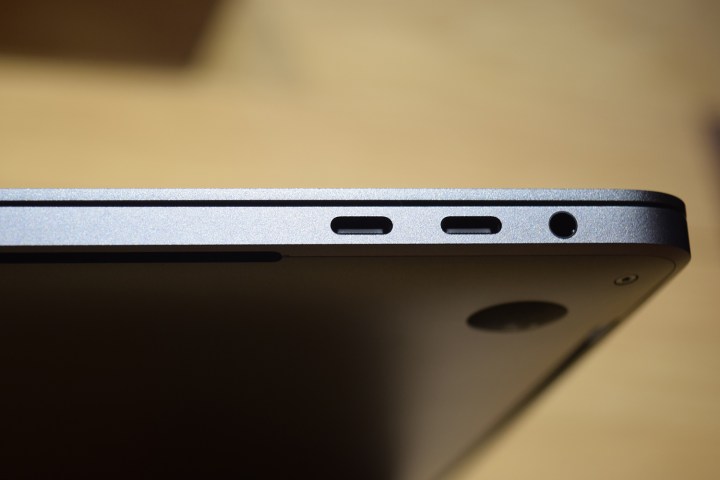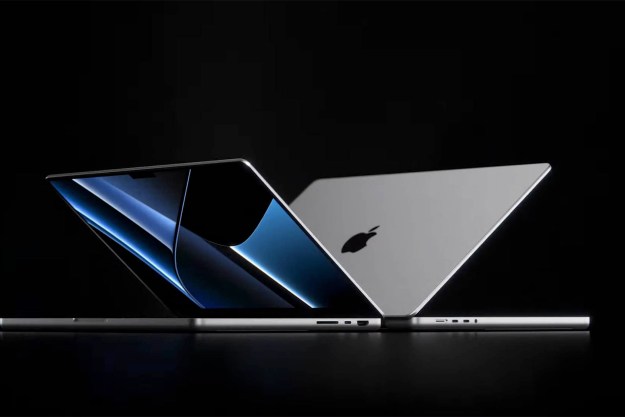
First, that built-in SD card reader is no longer there. In fact, Apple eliminated everything except for four USB 3.0 ports and a headphone jack — even the Lightning port and Ethernet option is gone. That allowed Apple to bring the 15 inch laptop’s profile down by about 2.5 millimeters, and the computer also lost about half a pound.
That weight loss comes at a cost — for photographers anyway — of bringing an external USB SD card reader along. External USB readers have a number of different benefits like the ability to read CF and Micro SD cards. In past models like the 2011 MacBooks, external card readers were often considered faster to use, though with Apple saying that the previous model had speeds up to 450 Mb/s, that likely would not have been the case had the 2016 option still included the card slot. Those external readers also have a few negatives — mainly, negating that slimmer profile by requiring another accessory stashed in the bag.
The magnetic power cord slot is also gone — the computer is powered by a new cord that fits into one of those four USB slots. While the four USB ports are nice to have, without any other ports, photographers that have a desktop station with an external monitor and keyboard will quickly run out of ports. With one for the monitor, keyboard, power cord and SD card reader, there isn’t another port for connecting an external hard drive without picking up another accessory — a USB port hub that turns one port into several. The 2015 15-inch MacBook Pro allowed users to power their laptop while using the card reader, an HDMI monitor, a USB keyboard and a USB external hard drive, no adapters needed.

While the need to bring along an external card reader may turn off some photographers looking to upgrade, the latest reiteration of the MacBook Pro has a number of perks. The touchbar — which Digital Trends reviewer Malarie Gokey says is like having an iPhone built into your laptop — is expected to see integration with third party apps, and Apple confirmed Adobe is already on board with that compatibility, which will likely translate into quick access to Photoshop shortcuts without having to memorize keyboard shortcuts.
While Apple has kept the display size and resolution the same, photographers will likely notice a difference since the new Retina display is 67 percent brighter, with enhanced color and more efficiency for running off battery power.
Speaking of power, the latest MacBook Pro lineup receives a bit of a speed boost for working with large image and video files. The updated Skylake core is also paired with an updated graphics processor with AMD’s Radeon 450 Pro. Storage space for all those big RAW files and 4K videos is also easier to find, with internal storage options now up to 2 TB.
The latest MacBook Pro options are creating waves with the new touchbar and enhanced graphics and performance — but the lack of an SD card slot could be a hiccup for some photographers considering an upgrade.
Editors' Recommendations
- Why Samsung’s answer to the MacBook Pro can’t quite compete
- MacBook Pro OLED: Here’s everything we know so far
- The new iPad Pro would be perfect, if only it were a Mac
- These 6 tweaks take MacBooks from great to nearly perfect
- A new wave of powerful laptops rises to challenge the MacBook Pro


